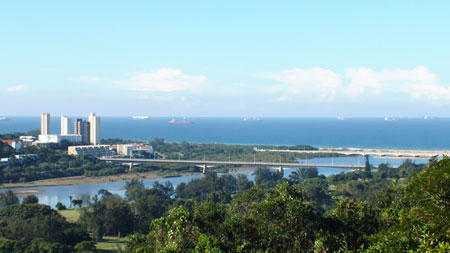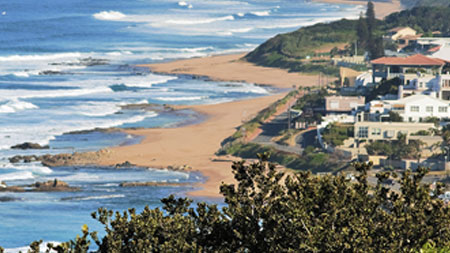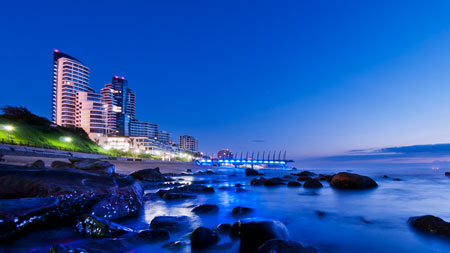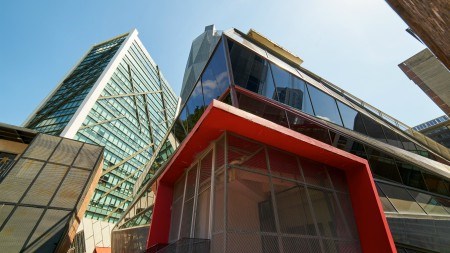Not all sectors of the housing market have been affected by the property slowdown.
Luxury homeowners in the Northern suburbs of Durban are biding their time and getting their asking prices…eventually.The city of Durban has undergone radical changes in the past 10 years. A large part of the business sector has moved to Umhlanga Ridge in the North, which in turn has exploded with new developments, both commercial and residential. Westville, too, has had a commercial explosion, bringing the office to the worker by developing a plethora of small office parks and readily-accessible shopping facilities, which has continued to drive demand for mid-priced properties. In the lower price bracket, Chatsworth and Queensburgh are popular among blue-collar workers because of their proximity to the industrial areas located south of Durban. Priced-to-sell properties coupled with the banks’ willingness to grant bonds have, despite the recession, continued to boost sales in this area.
While there may not be that many low-priced properties In the Northern suburbs, Westville, Queensburgh and Chatsworth all have pockets of high-priced properties reserved for the captains of industry within the white-collar and blue-collar worker domains. Proclaimed a township in 1964, Chatsworth has a total of 64 suburbs. According to SAPTG statistics, the area with the most sales was Montford which saw 56 sales worth R20 383 830 taking place over the past year. The average selling price was R363 996. Nearby Queensburgh had 77 freehold sales, with an average value of R687 363. There were 63 sectional title sales. Jan Vermuelen the MD of Seeff Queensburgh, a company that operates in both suburbs says the average price for a three-bedroomed home in Chatsworth is between R450 000 and R480 000. Homes situated close to schools are popular choices. He says buyers in this segment of the market are looking for security and homes that are situated close to shopping amenities and transport routes.
“Sales over the past year have exceeded our expectations. We have found that affordability is the key, with many sellers reinvesting in the area rather than moving into more expensive suburbs. Jeanne van Jaarsvelt, the general manager of Harcourts says Westville has always been regarded as a good, solid investment by the middle sector. Prices in the area have remained stable for many years and this is the main reason why the area has remained so popular. There are a number of excellent schools in the area and, according to Van Jaarsveld, while buyers do not necessarily want to live on a school’s doorstep, buying a home within the right school zone drives sales. The commercial hub as well as easy access to highways attracts businessmen and professionals. SAPTG statistics report there were 159 sales throughout this large suburb. When broken down, the area with the most sales was Westville proper, which recorded 31 freehold transactions with an average value of R1 576 501. In total there were 73 sectional title sales in the region of which five were sold in Westville proper for an average price of R2 233 333. Golden beaches, balmy weather and up-market shopping centres lure buyers and investors to Umhlanga Rocks. Property in the area is selling at a premium and the decision to build a new airport on that side of the city continues to fuel demand in the region. The sugarcane fields that once graced the hillsides have been replaced by up-market developments and modern office buildings.
There is also little evidence of the beachside homes that once dotted the Umhlanga Rocks’ coastline - they have been replaced by towering blocks of state-of the-art apartments that sell for millions. Keith Wakefield, from Wakefield’s Estate Agents says there are a number of reasons why the area and surrounds have become so popular, including the desire to live close to the business sector, a strong commercial presence in the form of shopping centres, as well as a number of good schools. “Certain areas do sell themselves more than others. This is because of their reputation and the quality of the homes. The fact that these properties are situated on large erfs gives an area an up-market feel, privacy from neighbours and exclusivity.” He notes that developments in nearby La Lucia and Umhlanga Ridge as well as Gateway’s New Town Centre where apartments are priced at a more affordable up-market entry level, has boosted demand. He believes the airport will continue to drive the popularity of both Umhlanga as well as surrounding areas. SAPTG statistics record that 68 sectional title sales were concluded in Umhlanga Ridge for a total value of R103 426 883. The highest price paid for a unit was R6,840m, while the average price was R1,520 923.
In addition, he says areas with sea views from dominating high ground sell well. However, sea views are not necessary the driving force behind those entering this segment of the market for the first time as people in this sector are far more likely to base their buying decision on the proximity to local schools and other amenities. There does appear to be a little trouble in paradise, and John Loos, the property strategist with FNB, says the average time that a property in the luxury segment stays on the market has increased to 19 weeks and four days. This is up from the 15 weeks and 6 days recorded at the beginning of the year. On a positive note he says sellers in this category, because of their superior financial strength, are able to hold on to their properties for a longer period in order to obtain their asking price. Obtaining your asking price still seems to be problematic in other areas of the market with only 20% of upper income, 19% of middle income and 12% of lower income sellers achieving the desired price. A larger proportion of buyers in the upper price range do not have to sell an existing home in order to purchase. They have either sold before buying a new property or have the financial capacity to invest in more than one home. This picture is very different in other sectors of the market, where sales are often conditional, based on the sale of a primary residence. Article courtesy of  and is taken from their September/October 2010 issue.
and is taken from their September/October 2010 issue.






